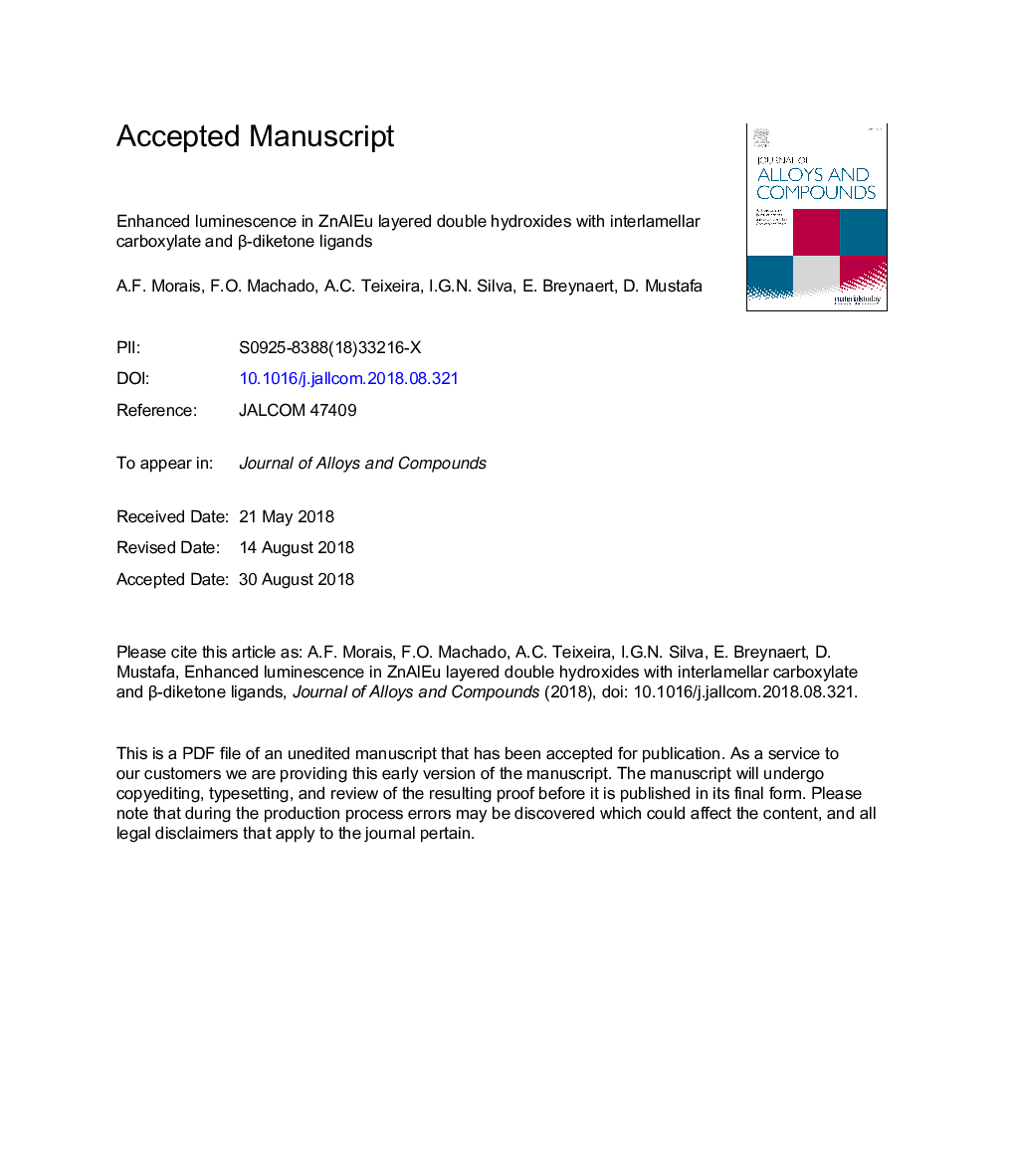| Article ID | Journal | Published Year | Pages | File Type |
|---|---|---|---|---|
| 10142212 | Journal of Alloys and Compounds | 2019 | 24 Pages |
Abstract
The physico-chemical properties of layered double hydroxides (LDHs) can be tailored to a large extent by exploiting the flexibility of their chemical composition. This report describes the synthesis and the detailed quantitative characterization of the luminescence properties of novel Eu3+-containing LDHs intercalated by carboxylate and β-diketonate anionic ligands. To prepare the samples, Zn2+, Al3+ and Eu3+ were coprecipitated in a ligand-rich solution containing 1,3,5-benzenetricarboxylate (BTC), acetylacetonate (ACAC), and thenoyltrifluoroacetonate (TTA). Powder X-ray diffraction is supportive for the intercalation of BTC and ACAC. The presence of TTA is revealed by CHN quantification and by the photoluminescence results. Detailed spectroscopic investigation of these materials demonstrates quantum efficiencies (η) of 15-17% emerging from the symmetry reduction engendered by the organic ligands in the vicinity of Eu3+. Due to (i) the metal-to-ligand proximity provided by the layered structure, (ii) the existence of quasi-resonant electronic states between ligand and metal and (iii) the relaxation of the f-f selection rules caused by the distorted symmetry around Eu3+, these LDHs present enhanced luminescence in comparison to inorganic LDHs intercalated with nitrate.
Related Topics
Physical Sciences and Engineering
Materials Science
Metals and Alloys
Authors
A.F. Morais, F.O. Machado, A.C. Teixeira, I.G.N. Silva, E. Breynaert, D. Mustafa,
